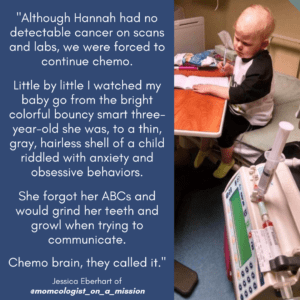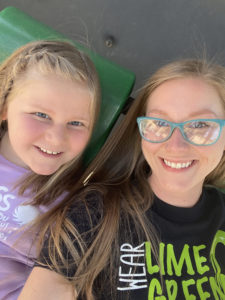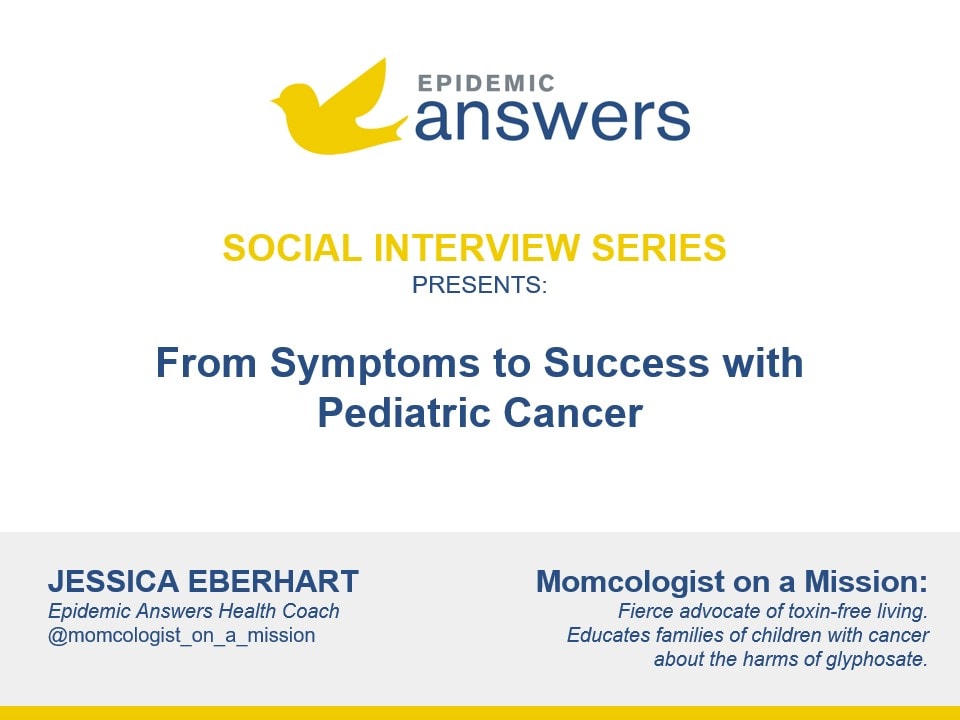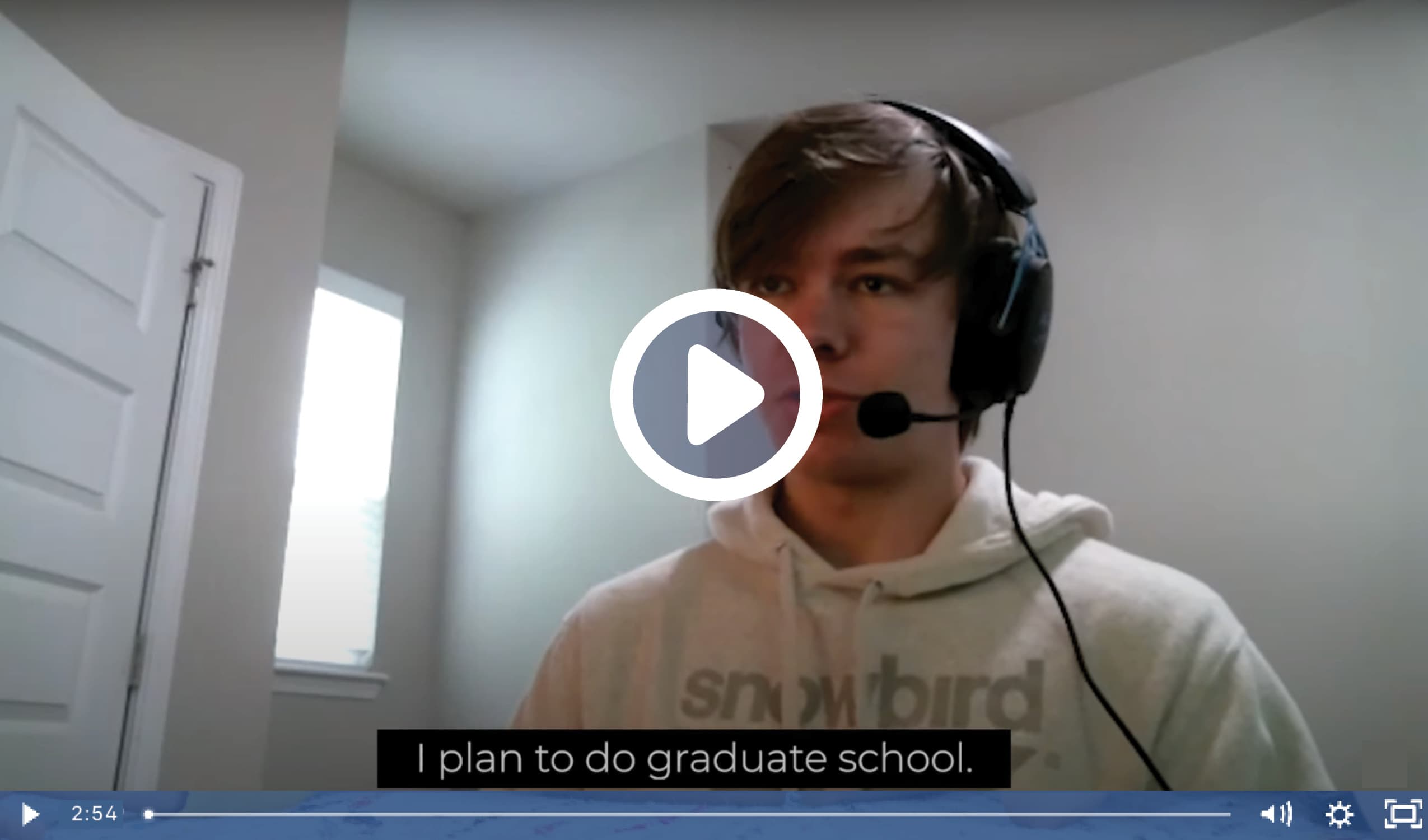It was early fall of 2014 when my three-year-old daughter, Hannah, began presenting with bizarre symptoms which left health care professionals at more than one hospital perplexed. Continual fevers, swollen lymph nodes, and excruciatingly painful joints on top of reactions to nearly every antibiotic doctors tried. Test after test, in and out of hospitals, I quickly came to realize I needed to help Hannah’s care team figure this out as we weren’t finding answers anywhere.
No Answers
After months living in the hospital with no answers, I explained my daughter’s situation to the dean of my college, and we agreed it would be best if I withdrew from work. I shifted my goal of working with patients to make Hannah my only patient. Growing up with a mom who worked in the hospital my whole life, and working in the hospital myself, I knew from personal experience that doctors are busy people with many patients and limited time. Maybe there was something out there they were missing? After all, no one knows my Hannah like I do.
So, I dug in and began researching. Things that came up as possibilities were all ailments she’d already tested negative for, except for one, cancer. I joined every meeting between doctors of different departments as they sat around with a giant whiteboard trying to connect the dots and solve the medical mystery, like an episode of House.
Biopsy Confirmed Suspicions
After arguing with more than one infectious disease doctor, oncologist, and surgeon, I was able to finally obtain a biopsy for Hannah which confirmed what I knew in my gut was true. It was cancer. Stage four Anaplastic Large Cell Non-Hodgkin’s Lymphoma, to be specific. I was told this wasn’t a form of cancer they see often in children her age, and that this was generally something they see in agricultural workers being that we were in the Midwest.
Weed Killer Likely Played a Key Role
In the week it took to get the results back from pathology, I’d spent as much time as possible looking researching Hannah’s diagnosis and what little information they’d given me. I didn’t realize their tip about agricultural workers would lead me towards the root cause of Hannah’s cancer. Not only did we live in a small town entirely surrounded by corn fields, we’d spent that entire summer spraying copious amounts of an herbicide – Roundup – to kill the grass underneath our at-home playground. The more I researched, the more I realized how exposure to this toxic substance most certainly played a key role in my daughter’s diagnosis.
Prior to this experience, I’d never given a second thought to the idea that there were toxins in our environment which drastically influenced our health in potentially negative ways. I believed that western medicine was the only form of medicine, and that doctors were nearly gods. I believed that pharmaceuticals were the only way to treat any ailment and that they couldn’t possibly have drawbacks or side effects that weren’t comical endings to happily produced commercials. I believed it all.
Hannah’s diagnosis and learning about the toxic nature of Roundup turned my world upside down, but in a good way. Not only did I finally have some answers, I felt like I could finally see a way to protect her. I would look for ways to remove toxins from our lives and control what I could. Decreasing the toxic load is important for everyone, especially for those with compromised systems fighting cancer.
Conventional Treatment Plan Offered
 First on the list was cancer treatment itself. I knew chemotherapy was toxic. The more I learned about its carcinogenic potential, the more I knew I didn’t want it for Hannah. I began reading about the healing properties of cannabis oil and became solidified in my decision that cannabis oil had to be a part of her healing protocol. Next was diet. I learned that Roundup was the most common herbicide used on genetically modified crops (as well as some non-GMOs). I decided I needed to speak with the nutritionist about how to avoid Roundup-contaminated foods, to which I knew nothing about at the time.
First on the list was cancer treatment itself. I knew chemotherapy was toxic. The more I learned about its carcinogenic potential, the more I knew I didn’t want it for Hannah. I began reading about the healing properties of cannabis oil and became solidified in my decision that cannabis oil had to be a part of her healing protocol. Next was diet. I learned that Roundup was the most common herbicide used on genetically modified crops (as well as some non-GMOs). I decided I needed to speak with the nutritionist about how to avoid Roundup-contaminated foods, to which I knew nothing about at the time.
When the time came to discuss Hannah’s treatment plan, I felt confident in my research and relief that I’d found so much information with scientific data to back it up as far as safer treatment and dietary options went. I remember bringing this information to the conversation only to be met with a rude awakening. “You’re not allowed to opt out of the prescribed treatment without child services’ involvement.”
I was absolutely shocked in that moment to learn that parents of children in the United States that are given a diagnosis of cancer by western medical doctors could lose their parental rights if they do not agree to the treatment suggested. To make matters worse, the treatment we were being prescribed was chemo for one full year, no dietary or lifestyle change suggestions, and no access or support for the cannabis I knew could help her immensely.
Building an Integrative Team
I knew there had to be more out there, and I wasn’t settling for their offer. I spent the next two days on the phone calling every oncology office possible and finally found a practice in Colorado that would accept Hannah as well as support the necessary dietary/ lifestyle changes and use of cannabis oil and other adjunctive care. I made it clear that we were building an elaborate team, and that we would all need to work together.
The cancer was so far progressed and pain was so intense that Hannah required a medical jet to transfer her from the hospital in Iowa to Colorado. As soon as we landed, I got to work assembling Hannah’s intergrative care team which included her oncology team, a naturopaththic oncologist, two cannabis physicians, a functional medical practitioner and more.
I visited my first-ever natural health food store to make sure what she was eating, drinking, and washing with were things conducive to healing and not packed with harmful ingredients. I really started to realize there was a lot I could do to support Hannah and help her heal rather than sit back and hope for the best with whatever toxic suggestions the oncology team had.
Remission After One Month
 It was only one month after we arrived and started our new lifestyle that we received the news: Hannah had gone into remission. She had only had one dose of chemo, one month of an all-organic diet, and one month on full spectrum cannabis oil in that timeframe. The scans had come back unable to find cancer in her body, a remarkably different finding than the cancer filled scan the month before.
It was only one month after we arrived and started our new lifestyle that we received the news: Hannah had gone into remission. She had only had one dose of chemo, one month of an all-organic diet, and one month on full spectrum cannabis oil in that timeframe. The scans had come back unable to find cancer in her body, a remarkably different finding than the cancer filled scan the month before.
Although Hannah had no detectable cancer on scans and labs, we were forced to continue chemo. Little by little I watched my baby go from the bright colorful bouncy smart three-year-old she was, to a thin, gray, hairless shell of a child riddled with anxiety and obsessive behaviors. She forgot her ABCs and would grind her teeth and growl when trying to communicate. Chemo brain, they called it. A neurological regression due to the amount of toxins being forced by the very same doctors that swore they were here to help. She also developed neuropathy (nerve damage) in her feet that required physical therapy and additional measures done at home. We still don’t know the long-term effects of the combination of chemo drugs she received.
Complementary Care Helped
With the help of intergrative practitioners, the knowledge I’d gathered from endless research, supplements including cannabis and essential oils, chiropractic adjustments, acupuncture, homeopathics, detox baths and more, we were able to regain what she had lost both neurologically and physically. After chemo was finally finished for good, I learned that oncology doesn’t offer their patients any suggestions or protocols to repair the damage caused by their drugs.
So, we set out to help her body heal even further with the help of functional medicine. It was then that I learned the importance of maintaining a healthy terrain and decreasing the toxic load, not only to heal from chemo damage, but to also keep Hannah in remission.
Importance of Bioindividuality
I learned that there is truly no one-size fits-all-approach to health or healing, as we are all bioindividually unique in our needs. Finding the Epidemic Answers Coaching program really solidified everything I’d been learning for Hannah, with the added bonus of learning that my son too was struggling with food sensitivities and sensory processing issues. These symptoms were also improved for him with the tools I learned during the program. In the end, the entire family has seen numerous benefits from making the changes together as a whole.
One of the biggest reasons I advocate for health freedom is because I know all too well what it feels like to watch a child be injected with something that you know with every fiber of your being as harmful. Another reason I advocate is because I know from experience it doesn’t have to be this way.
There is SO much more available than allopathic oncology has to offer, but it takes you – the empowered and informed parent – to be your child’s best advocate and assemble a care with an abundant tool box. I see a brighter future for kids diagnosed with cancer when parents are more informed about cause, decreasing toxic load, and ultimately living a preventative lifestyle.
– Jessica Eberhart CHC
Still Looking for Answers?
Visit the Epidemic Answers Practitioner Directory to find a practitioner near you.
Join us inside our online membership community for parents, Healing Together, where you’ll find even more healing resources, expert guidance, and a community to support you every step of your child’s healing journey.
Sources & References
Cohen, Patricia. Roundup Maker to Pay $10 Billion to Settle Cancer Suits. The New York Times. 24 Jun 2020.
Gunatilake, S., et al. Glyphosate’s Synergistic Toxicity in Combination with Other Factors as a Cause of Chronic Kidney Disease of Unknown Origin. Int J Environ Res Public Health. 2019 Jul 31;16(15):2734.
Lombardi, C., et al. Residential proximity to pesticide application as a risk factor for childhood central nervous system tumors. Environ Res. 2021 Jun;197:111078.
Morley, W.A., et al. Diminished brain resilience syndrome: A modern day neurological pathology of increased susceptibility to mild brain trauma, concussion, and downstream neurodegeneration. Surg Neurol Int. 2014 Jun 18;5:97.
Samsel, A., et al. Glyphosate, pathways to modern diseases II: Celiac sprue and gluten intolerance. Interdiscip Toxicol. 2013 Dec;6(4):159-84.
Samsel, A., et al. Glyphosate, pathways to modern diseases III: Manganese, neurological diseases, and associated pathologies. Surg Neurol Int. 2015 Mar 24;6:45.
Samsel, A, et al. Glyphosate’s suppression of cytochrome P450 enzymes and amino acid biosynthesis by the gut microbiome: Pathways to modern diseases. Entropy. 2013;15:1416–1463.
Takano, T., et al. Glutamate release promotes growth of malignant gliomas. Nat Med. 2001 Sep;7(9):1010-5.
Resources
Books
Beine, Dagmara. A Parent’s Guide to Childhood Cancer: Supporting Your Child with Integrative Therapies Based on a Metabolic Approach. Chelsea Green Publishing, 2024.
Bernstein, Richard K. Dr. Bernstein’s Diabetes Solution: The Complete Guide to Achieving Normal Blood Sugars. Little, Brown Spark, 2011.
Perro, Michelle MD, et al. What’s Making Our Children Sick?: How Industrial Food Is Causing an Epidemic of Chronic Illness, and What Parents (and Doctors) Can Do About It. Chelsea Green Publishing, 2017.
Seyfriend, Thomas. Cancer as a Metabolic Disease: On the Origin, Management, and Prevention of Cancer. Wiley, 2012.
Winters, Nasha. The Metabolic Approach to Cancer: Integrating Deep Nutrition, the Ketogenic Diet, and Nontoxic Bio-Individualized Therapies. Chelsea Green Publishing, 2017.
Websites
Dr. Bernstein’s Diabetes Solution
Metabolic Terrain Institute of Health





